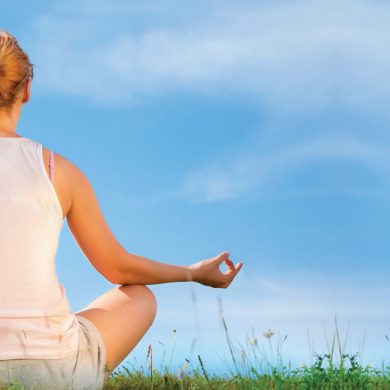Oils have been used in Ayurveda as a powerful medicine to maintain and improve our sense of wellness. The stress we encounter in today’s hectic world can cause the body to build up blockages and get us out of balance. This lack of balance can result in illness. The majority of chemicals and toxins in the body are fat-soluble rather than water-soluble. So, oil can help to free these blockages by permeating the skin and becoming absorbed into the body. This helps to pull the toxins away from our fat and reabsorb them into the intestines. Toxins are then released and eliminated as waste.
Oils also help to calm the nervous system and allow the cells to exchange information more freely.
The skin is the body’s largest organ and plays an important role in maintaining overall health. skin is alive, and to best give life back to the skin, we need to use natural products. Plant-based products, meaning flowers, vegetables, fruits, and herbs are nourishing and beneficial to the skin. Vegetable oils are extracts from plants. The best oils are organic, which means that the plants they are made from have not been subject to any chemical spray or fertilizer. There are many beauty products that are made with these natural ingredients and you can often find them in health food stores.
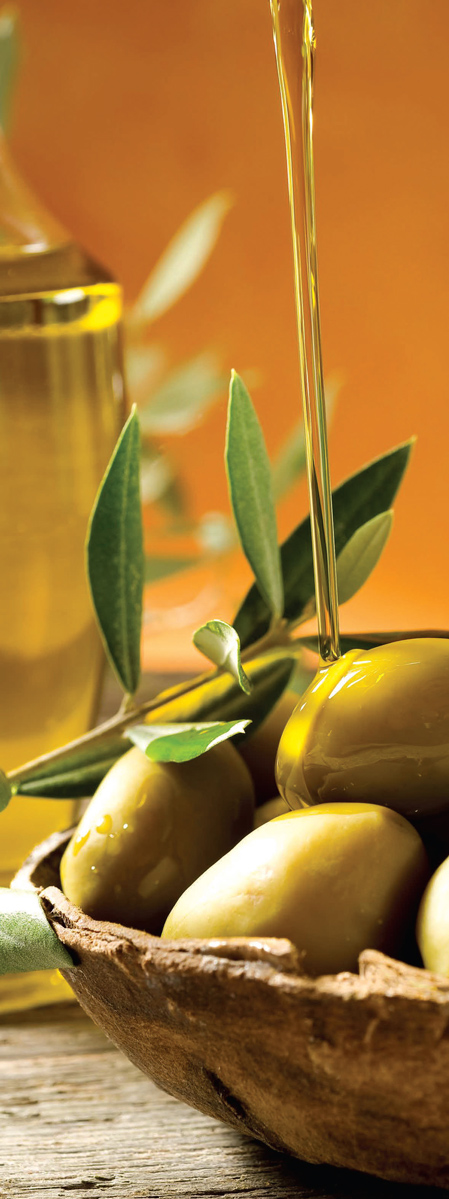 Vegetable oils
Vegetable oils
There are many different varieties of vegetable oils, and ayurveda recommends a few different ones for each skin type.
- If you have dry, or Vatta skin, look for Sesame, Avocado, Olive, Almond, or Walnut Oil.
If you have sensitive, or Pitta skin, use Almond, Coconut, Sunflower, Apricot Kernel, or Olive Oil. - If you have oily, or Kapha skin, the best oils for you are Canola, Corn, Safflower, Mustard, Grapeseed, Apricot Kernel, or Almond Oil
You can use vegetable oils as a natural moisturizer, or for massage. you can slather on the oil before your shower to give your skin an extra treat!
Vegetable oils are so good you’ll want to keep them near every sink in your home, to moisturize your hands a little bit after you wash them. This keeps your hands feeling soft and looking young. Put a little dab of olive oil on eyelashes and eyebrows before bed and they’ll get thicker over time.
The sanskrit word for oil is “snigdha.” sanskrit has many layers of meaning, and translated, snigdha means oil, fat and also, love! oil creates smoothness, lubrication, and vigor. it is nourishing, like love. When we use oil in a massage, we are taking care of ourselves, and coating ourselves with love. The opposite of oily is dry, or “ruksha.” Dryness creates dehydration. Dry weather aggravates Vata, and causes dry skin. fear, nervousness, anxiety and loneliness are also dry. Love is the antidote! so to balance ruksha, coat the skin with oil, or love. Then take a warm shower after the application of oil, and the skin, kidneys and colon are also nourished.
Coconut oil
Coconut oil is popular in ayurveda as a massage oil to balance pitta, and as a conditioner for hair. I’ve come across some other uses for coconut oil that might surprise you – but how wonderful to be creative, and health conscious at the same time!
- Coconut oil is conditioning to the hair and it can also help cure dandruff. Just massage a little bit onto the scalp. This is a very gentle treatment that can even be used on children and babies.
- Coconut oil has strong anti-fungal agents, so it can be used to treat athlete’s foot, Ringworm, Thrush and yeast infections.
- Moisturizing properties of coconut oil make it good for helping many skin conditions like eczema. it can also be used as a make-up remover, or as a lip balm.
- Because coconut oil has anti-microbial and anti-inflammatory properties, it can be used as a cream for small cuts and scrapes, protecting against infection while helping the skin to heal.
- Mixed with baking soda, coconut oil can be used as a natural toothpaste.
Ayurvedic Massage (Abhyanga)
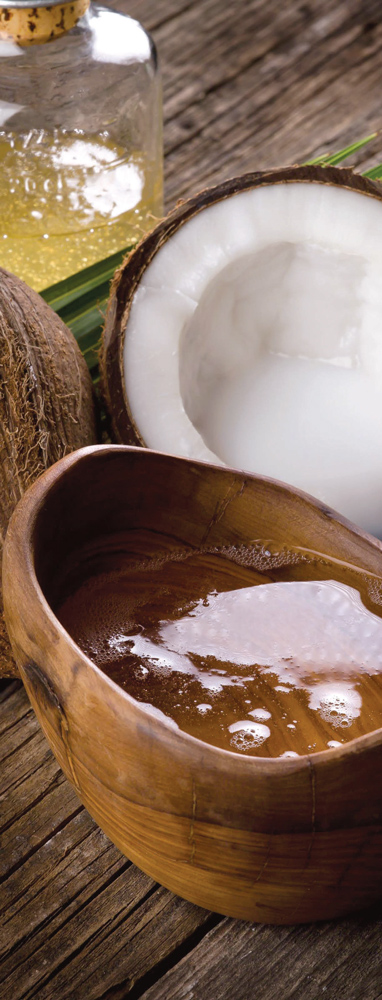 Ayurvedic massage (Abhyanga)
Ayurvedic massage (Abhyanga)
Ayurvedic massage offers many benefits. if done in the morning, it helps you to start your day off relaxed, which is essential in maintaining balance. When done at night, it promotes a restful night’s sleep. It doesn’t matter when you choose to do the massage, but you will receive the optimum benefits if you do it every day. since the quality of Vata is dry and cold, a warm and oily massage provides an ideal balance for Vata types, though all types will notice increased health and vitality, especially during Vata season. The massage soothes the nervous and endocrine systems, since skin produces endocrine hormones. it moisturizes and rejuvenates the skin, promoting a youthful appearance. it also helps the skin to eliminate toxins and tones the muscles.
Sesame oil is generally recommended for ayurvedic massage because it helps to balance all three of the doshas. But feel free to choose one of the oils that are specific to your dosha. You can also add herbs or fragrances to the oils to personalize them for your needs. The entire massage requires only about two ounces of oil each time.
Before you begin, warm the oil to skin temperature. The easiest way to do this is to keep a small plastic squeeze bottle filled with oil, and set the bottle in a bowl or cup of very hot water. Wait a few minutes for the oil to reach skin temperature.
While the oil warms, lay out a towel to protect the carpet or floor from any oil that may spill.
When you are ready, start the massage at your head. Drizzle a small amount of oil onto your scalp and massage it in with the palms of your hands. (you can skip the scalp part of the massage on days that you are not washing your hair.) Use a clockwise, circular motion. Then gently massage your face and ears. if you have oily skin, avoid those areas that are prone to breakouts. Massaging the ears is excellent for balancing Vata.
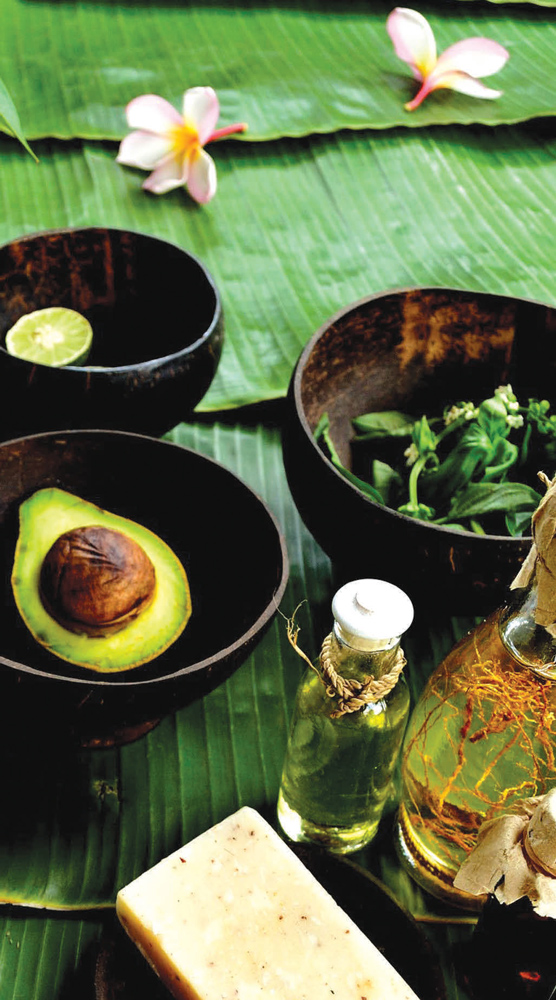 Drizzle some oil in your palms and massage your neck, then move to your shoulders. Use a circular motion on your joints – shoulders, elbows, knees – and long up-and-down strokes on your limbs. Be gentle on your torso. Use large, clockwise motions to massage the chest and stomach area.
Drizzle some oil in your palms and massage your neck, then move to your shoulders. Use a circular motion on your joints – shoulders, elbows, knees – and long up-and-down strokes on your limbs. Be gentle on your torso. Use large, clockwise motions to massage the chest and stomach area.
Reach around to massage your back as best as you can without straining.
Then massage the legs, ankles, and knees. Using the palm of your hands, vigorously massage the feet.
It is best to leave the oil on the body for 20 minutes before washing it off in a warm, not hot, shower or bath. you can use this time to meditate or do your yoga exercises. if you don’t have time to wait, that’s fine. it’s much better to do a quick massage than none at all.
Foot massage
Ayurvedic massage typically uses warm sesame oil, or a blend of oils and herbs specifically to balance your particular dosha. A foot massage can be a self-massage, or you can indulge your partner. The ayurvedic massage technique doesn’t involve deep muscle massage; rather the goal is to stimulate the subtle energies of the marma points and nadis (similar to acupressure points) in the body. Start with the right foot, then repeat the same steps on the left. Here’s what you do:
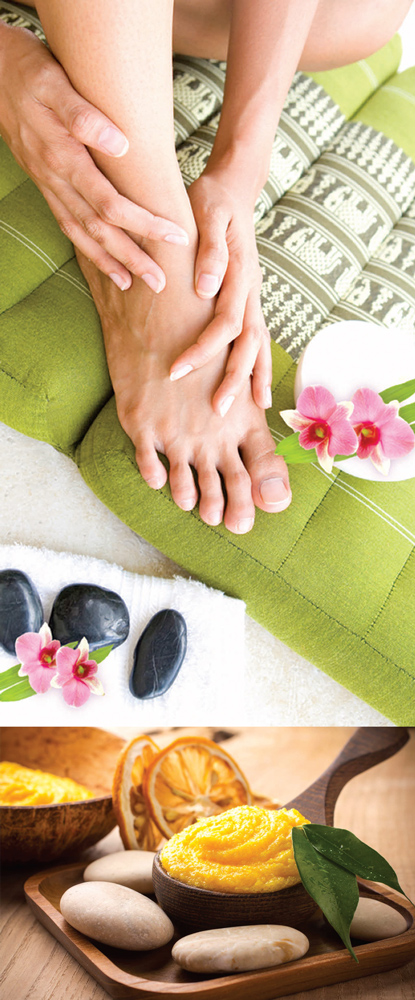 Start with the point located in the middle of the arch of the foot. Massage this area with your thumb; it is good for the heart.
Start with the point located in the middle of the arch of the foot. Massage this area with your thumb; it is good for the heart.
Using the thumb, massage the point located in the middle of the underside of the big toe. This area regulates hormonal activity.
Starting with the big toe, massage the underside of the base of each toe. Then massage each toe all around by gently pulling upward from the base to the top. each toe corresponds to a major organ: brain, lungs, intestines, kidney, and heart.
Now work on the top of the foot. Using both thumbs, massage the groove between the base of the big toe and the second toe. Massage up toward the ankle until you feel the bone.
Now hold the foot with both hands and massage upward from the toes to the ankle.
Scalp massage
A gentle scalp massage with sesame oil is also beneficial because it improves circulation at the root of the hair.
Ayurveda is really big on scalp massage as a way to improve circulation and stimulate hair growth. We lose about 50-100 strands of hair a day, so we need to keep a constant supply coming! it is a good idea to treat yourself to a scalp massage once a week. if you have dry hair or dandruff, you may want to do this twice a week. if you have oily skin or hair, you can do the massage without the oil. first thing in the morning, or last thing before bed, are the best times for this treatment. start by warming one teaspoon of sesame oil, or your favorite oil for your dosha. Massage this into the scalp for ten minutes. Use the pads of your fingers, not your nails. Massage in a circular motion. Then wrap your head in a hot towel and leave on for about 10 minutes. This helps replace some of the lost moisture in your hair and is the best conditioning treatment ever. Wash hair with a gentle shampoo. Massage increases circulation to the scalp and promotes healthy hair growth. and it feels great!
 Lissa Coffey is a lifestyle and relationship expert who serves up an inspiring blend of ancient wisdom and modern style. She appears frequently on television and radio, and contributes to national publications with her insightful and compassionate approach to modern-day issues. Coffey is also a bestselling author and has written books like “Song Divine: A New Lyrical Rendition of the Bhagavad Gita.” WhatsYourDosha.com.
Lissa Coffey is a lifestyle and relationship expert who serves up an inspiring blend of ancient wisdom and modern style. She appears frequently on television and radio, and contributes to national publications with her insightful and compassionate approach to modern-day issues. Coffey is also a bestselling author and has written books like “Song Divine: A New Lyrical Rendition of the Bhagavad Gita.” WhatsYourDosha.com.







